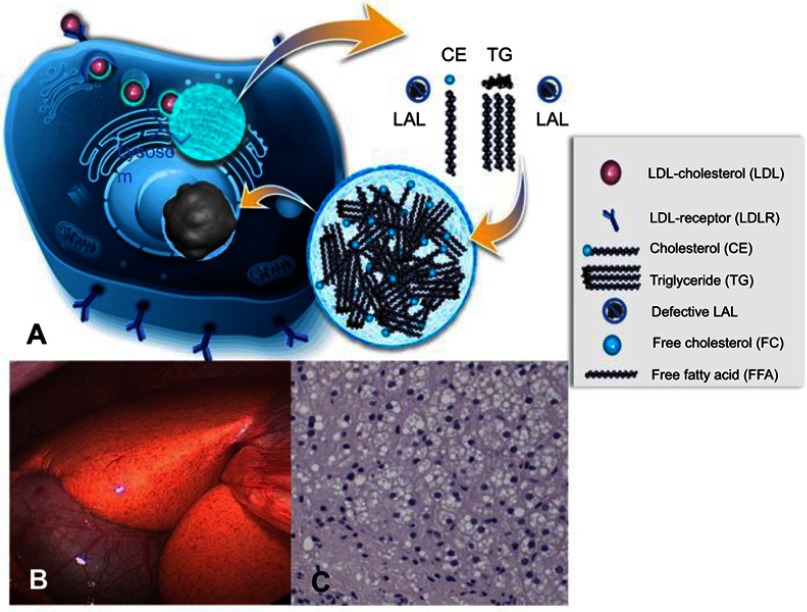Figure 2.
Summary of the mechanisms of disease. Cholesterol is physiologically taken up as cholesteryl esters via the LDL receptor – endocytosis pathway into lysosomes and then hydrolyzed by LAL enzyme (A). In cases of defective LAL activity cholesteryl esters and triglycerides accumulate in lysosomes, leading to universal microvesicular hepatic steatosis with development of fibrosis (C). Cholesterol accumulation causes orange coloration of the fatty liver (B), which is different from the triglyceride accumulation characteristic of common-type non-alcoholic fatty liver disease. (A) Published with permission of Alexion Pharmaceuticals. (B) and (C) Reproduced from Zandanell S, Primavesi F, Aigner E. Hepatosteatosis from Lysosomal Acid Lipase Deficiency. J Gastrointest Surg. 2019;23(3):601-602 (http://creativecommons.org/licenses/by/4.0/).44
Abbreviations: LAL, lysosomal acid lipase; CE, cholesteryl ester; TG, triglyceride; LAL, lysosomal acid lipase; LDL, low-density lipoprotein.

